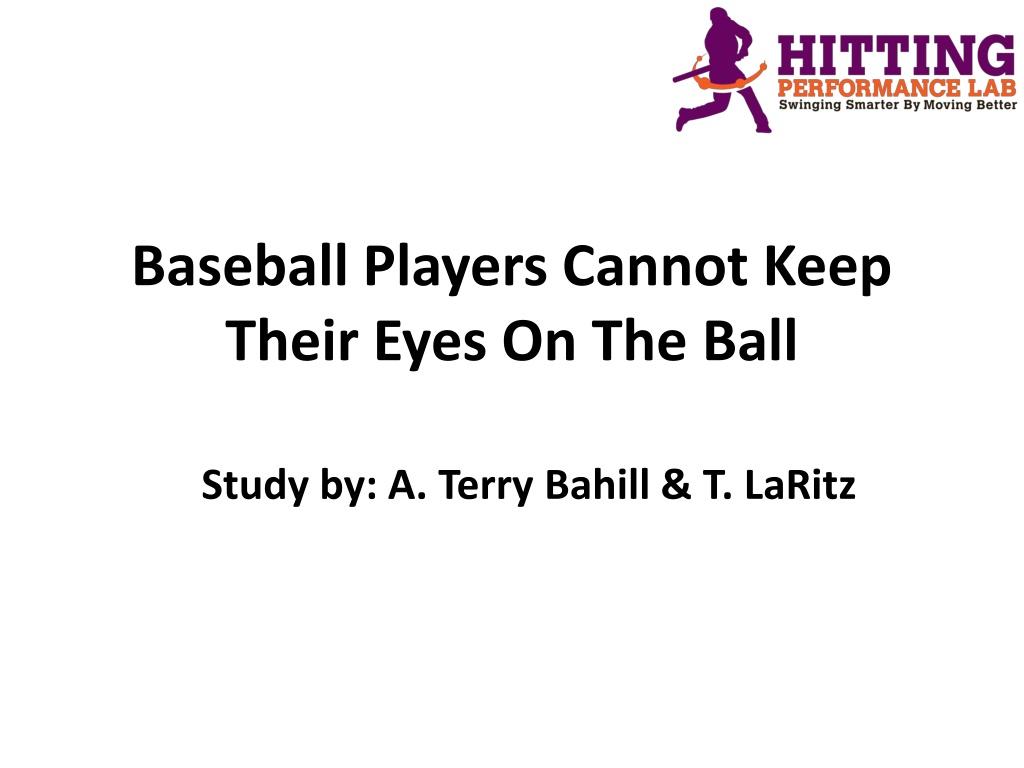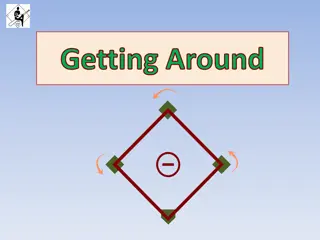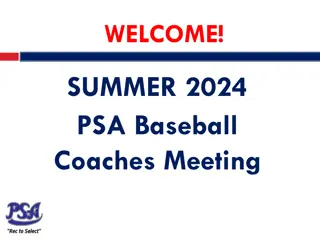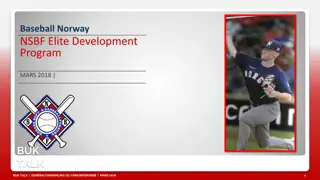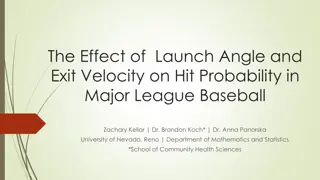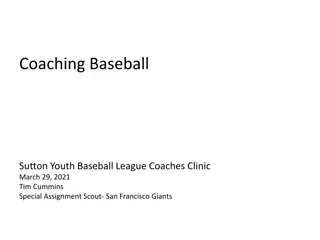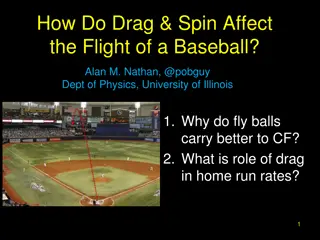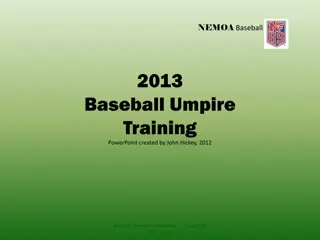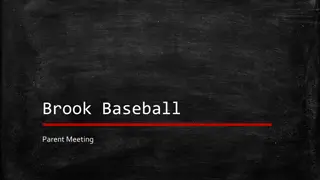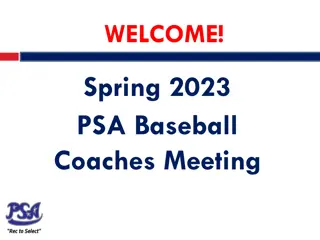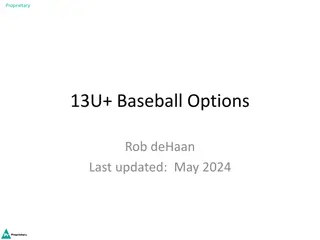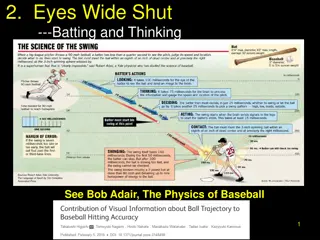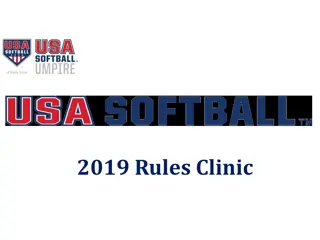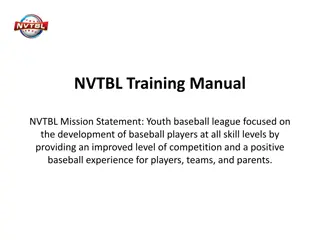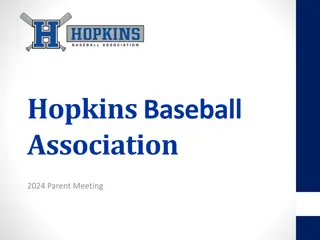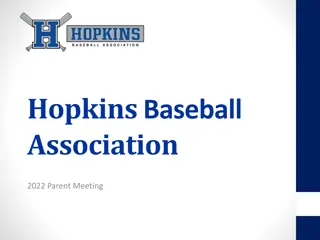Understanding the Challenges of Keeping Eyes on the Baseball: Study Insights
Exploring the difficulty baseball players face in tracking the ball, this study reveals the limitations of human vision in fast-moving scenarios. By simulating fastballs and monitoring eye movements, researchers found that professional athletes rely on a combination of head and eye movements for better coordination. The study sheds light on the complexities of visual tracking in sports and provides valuable insights for player performance improvement.
Download Presentation

Please find below an Image/Link to download the presentation.
The content on the website is provided AS IS for your information and personal use only. It may not be sold, licensed, or shared on other websites without obtaining consent from the author. Download presentation by click this link. If you encounter any issues during the download, it is possible that the publisher has removed the file from their server.
E N D
Presentation Transcript
Baseball Players Cannot Keep Their Eyes On The Ball Study by: A. Terry Bahill & T. LaRitz
Ted Williams stated that it was only on the rare occasions that he could see the ball hit the bat.
The Problem Common coaching cues: Keep your eyes on the ball & Watch the ball hit the bat Tracking 100-mph pitch would require head and eye rotations of 1000 degrees/sec 100 years scientific literature says humans cannot track targets moving faster than 90-degrees/sec Difference between tracking an airplane going same speed at an altitude of 20,000 feet VERSUS 100-feet overhead linear v. angular velocities
What Were Going To Cover In This Presentation: How the problem was solved Study conclusions Study applications Study limitations
How Problem Was Solved Simulated fastball was a whiffle ball pulled on fishing string connected to a motor. 60 6 , high outside fastball simulated speeds ranged between 60 to 90-mph left handed pitcher to right handed batter. Technical equipment monitored eye movements mounted on special eye glasses. Technical equipment that kept track of head movement sat on top of the head. Yaw (shaking your head no ) Pitch (shaking head yes ) Roll (cocking of the head)
How Problem Was Solved Subjects for experiment graduate students undergrad baseball player students Brian Harper (Pittsburgh Pirates 20/20 uncorrected vision). Four types of eye movements with independent control systems: Saccadic used for reading text or scanning room full of people Vestibulo-occular used to maintain fixation during head movements Vergence used when looking between near and far objects, and Smooth-pursuit used when tracking a moving object.
Study Conclusions Students made large head or eye movements, and not a combination of both Professional hitters moved a combination of both Professional athlete had faster smooth-pursuit eye movements Professional athlete had better eye-hand coordination
Study Conclusions Stance of professional was repeatable, head position was the same within 1* Consistency with head position: eyes rotated 22* to left, head rotated 65* left (yaw), head bowed down 23* (pitch), and head tilted right 12* (roll). Professional athlete could track ball until 5.5 feet from plate, whereas the amateur tracked it until 9- feet to home plate
Study Applications Dont Move Your Head! Professional hitter gave his head a head start because the head is heavier than the eyes, takes longer to get moving. Vestibular system in inner ear signals the oculomotor system to make a compensating leftward eye movement. This allows the head to start turning while the gaze remains fixed on the ball . However vestibular compensation stops in last half of ball flight head and eyes must both being moving to the right.
Study Applications Dont Move Your Head! Professional made tracking head movements 10- 20* What batter DOES NOT want to do is allow rotations of the body to drag the head along. Don t let your body pull your head, but it s okay to move your head to help track the ball.
Study Applications Dont Move Your Head! Slowest pitch for hitter s eye not to fall behind would be 21-mph assuming no wind and thrown at a 45* angle. To see the ball hit the bat? Would need an anticipatory saccade jump from first 1/3 of the plate to last 1/3, but you d miss the middle 1/3 distance to plate Saccade suppression look at your image in mirror, look at your left eye, then look at right eye did you see the eyes move? Process that turns of visual system during saccadic eye movements would think the world is flying around us. Hitter uses predictive abilities to track the ball the last 1/3 of ball flight peripheral vision
Study Limitations Data pool was small. Experiments were difficult to perform. 50 hours of data collection. Thousands of hours of setup time and data analysis. Complete head and eye data for 6 pitches, and partial data for another 15 a total of 11 secs of data.
Study Limitations Subjects never swung the bat (fear of breaking equipment). Possible head and eye coordination would be different if swung the bat. Easiest pitch to track high and outside fastball from left handed pitcher to right handed batter. Even with limitations, easy to generalize the findings.
What We Went Over: How the problem was solved Study conclusions Study applications Study limitations
